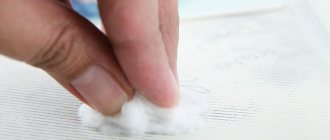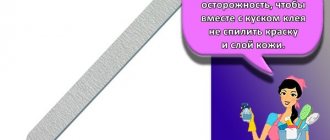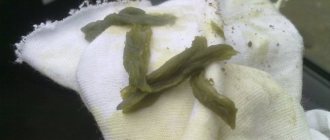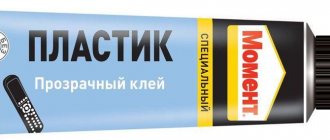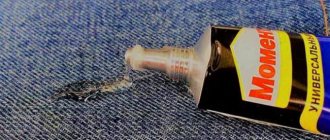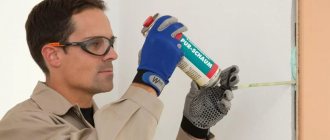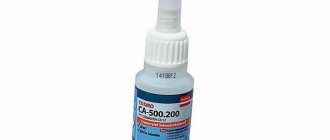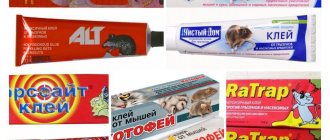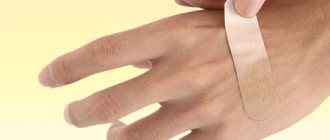The chemical industry had a big breakthrough when they started producing glue. The most popular among consumers has become superglue, which “saves” many things. However, the strong composition of adhesive components does not always work for the benefit of humans. When someone accidentally spills this chemical, it immediately sets and dries.
Therefore, many housewives are interested in the question: “How to remove glue from skin and other surfaces?” Of course, it is not easy to clean the material from the adhesive composition, but using some tricks at home you can very quickly get rid of the problem.
The most accessible solvents
The most universal natural remedy, which can be used to remove dried traces of carpentry, plant, stationery and polyvinyl acetate compounds, is water. To clean the surface, simply blot the fresh residue quickly and rinse with water until the sticky residue disappears. Unfortunately, if the stain is old and firmly ingrained, then it is not possible to remove it using such a solvent.
Another popular remedy that can be used to dissolve glue has proven itself to be sunflower and baby oils. Each of them needs to grease the dried residue several times and wait a while. It will gradually lose its adhesive properties, and the solvent will mix with it, since many types of adhesive mixtures are oil-based. Upon completion of the procedure, the remaining marks are easily erased, and the surface is rinsed with water. Vaseline has a similar property; its high fat content promotes the rapid breakdown of molecules.
Among natural solvents, ordinary vinegar can be distinguished. You should wipe the stained area with it and wait half an hour. During this time, the stain will begin to lose strength, dissolve in acid, and the residue will need to be wiped off.
A mixture of baking soda and water in a 2:1 ratio is very effective in this matter. This paste-like substance is applied to the contaminated area, wait until the clot is completely dissolved and rinse with water.
Alcohol is considered an effective solvent, capable of decomposing many adhesive compositions. When applying this drug to the stained area after 5-10 minutes. the strong clot will soften. Next, the residues are freely removed during the process of wet wiping. Acetone has a similar effect, but should be used carefully when cleaning synthetic surfaces. Other known solvents are: gasoline, turpentine, white spirit, ammonia. When using them, for greater efficiency, the adhesive clot is preheated with a hairdryer. Thus, the process of its removal is accelerated.
Universal compositions for removing adhesive traces at home
Regardless of the type of glue, there are universal products that can handle any stain. These include:
- Plain water . It can dissolve almost any glue if you act quickly. With its help you can get rid of stationery, latex, vegetable, carpentry, wallpaper and PVA glue. The principle of removal is simple: the stained area is washed until there are no stains left on it.
Alcohol. It handles most adhesives. Alcohol dissolves even those glue molecules that have managed to firmly adhere to the surface. It is applied to cotton wool or a sponge, which is used to wipe the stain until it disappears completely. If necessary, the material can be left on the stain in the form of a compress.- Acetone. It is one of the popular solvents, as it can handle even difficult stains. To remove the adhesive composition, soak a cotton pad in acetone and use it to treat the surface until completely clean.
- Vegetable oil . The fat base makes the glue more pliable and makes it easier to remove it from the surface. To clean, use a cotton pad soaked in oil and rub the stain until it disappears completely. If the glue is persistent, then you will need to make some effort, but the oil can deal with sticker marks in no time.
- Solvents: gasoline, white spirit, turpentine, solvent 646, R-4, RS-2, etc. These caustic compounds allow you to remove different types of glue without leaving a trace. They are used to combat stubborn stains, for example, from silicate glue, Titanium, liquid nails and more.
Alcohol, vegetable oils and water are safe adhesive removers and can be used on most materials.
Acetone and solvents are used with caution, as they can damage some surfaces, such as upholstery or paper.
How to remove PVA?
Of all existing adhesives, PVA is the most susceptible to dissolution. The arsenal of tools that can be used to dissolve PVA glue includes the following materials:
- 1. hot soapy solution – when treating with this material, the surface should be washed with 9% acetic acid or 96% alcohol;
- 2. baking soda perfectly softens hardened residues; to get the result, you need to walk a hard sponge with soda over the PVA layer - it will be wiped off in a minute;
- 3. water softens the dried PVA clot, its soluble elements are separated from the emulsified suspension, the remains can be wiped off with a rag moistened with acetone, methanol, isobenzene or ethyl acetate.
How to get rid of traces of Super Glue and Moment glue?
A product such as Super Glue glues any materials together in a matter of seconds. Before you start working with it, you need to familiarize yourself with how to dissolve Super Glue if you need to correct mistakes. Several factors influence the choice of solvent:
- • how long ago the adhesive was used,
- • the type of surface on which it is located,
- • purity of the expected result.
The main thing is not to miss the time of its hardening. Otherwise, the work will become significantly more complicated; most often, the stained surface will lose its attractiveness irrevocably.
Among the effective methods for dissolving Super Glue, as well as its analogue Moment, acetone should be highlighted. However, it has a negative effect on varnished materials and may cause more harm than good. This should be taken into account before starting cleaning work. It is possible to remove a fresh stain in a couple of hours using dimethyl sulfoxide, which is freely available in any pharmacy.
Read also: Making a square-faced hammer
No matter how strange it may seem, water is the longest-lasting, but at the same time safest means of dissolving hardened Moment glue. To do this, apply a damp cloth to the contaminated area and cover with polyethylene for a day. Within 24 hours, the clot will gain moisture and can be easily wiped off with an abrasive sponge.
Chemical methods
To clean the surface, you can purchase products that, thanks to chemical elements, effectively remove the adhesive composition.
Acetone
Household solvent is used to remove paint and glue.
We take a dry cloth, moisten it with the preparation, immediately apply it to the stained area, leave it for 20 minutes, then carefully clean it with a scraper and wash it with a rag.
The presented component in some cases leads to erosion of the composition, so manipulations are recommended to be carried out with the utmost caution.
White spirit, gasoline
Typically, both products are used as stain removers to clean difficult stains, but they can also easily dissolve various types of glue. Just take a napkin, saturate it with the selected component and actively rub the product.
White spirit evaporates easily, so it is recommended to wear a respirator on your face when working with it.
Dimexide
The medical product is used to remove contaminants and dissolve adhesives.
We take a rag, soak it in the product, apply it to the area stained with adhesive, after a quarter of an hour we clean the surface with a plastic scraper, rinse and wipe dry.
Dimexide has one drawback - it smells too unpleasant.
Anticlay Super Moment
This popular and popular product easily dissolves superglue.
We screw the cap on to pierce the sealed membrane, apply it to the required area and, as soon as the solvent has taken effect, carefully collect the glue with a plastic object.
To prevent the formation of streaks, it is recommended to wipe the treatment area with a damp cloth and dry.
Second Anticley
A simple remedy is inexpensive, but despite this, it is very effective.
Apply the component to the surface, wait 1 hour, and after a while clean it with a scraper and a rag.
If too much glue has spilled out, then you need to use 3-4 tubes, since one contains 5 g of the composition.
Cleaner Contact
The product can be purchased in 2 types: a bottle with a brush and a tube with a nozzle.
Both drugs do their job well. It is enough to apply the product to the stained area, leave it for 3-4 hours, then, when the adhesive mass becomes viscous, remove it with a plastic object.
If the glue has poured out in a thick layer and has dried, then the processing process should be repeated again.
How to dissolve stubborn adhesives?
Many people do not know how to dissolve Titan glue, which belongs to the class of very resistant and difficult to remove compounds based on acrylic copolymers. Effective means that help dissolve it are concentrated plumbing acid, gasoline, dimethyl ketone, turpentine, methylbenzene, ethyl acetate. After soaking in these products, it is necessary to remove the residues mechanically.
When choosing a method for dissolving epoxy glue, you should remember that this will have a significant impact on the performance properties of the final polymer. The addition of solvents helps reduce viscosity, and the strength and water resistance characteristics of the product deteriorate. Suitable for dilution are acetone and denatured alcohol, which can evaporate quickly without remaining in the resin.
When choosing a product to dissolve rubber or 88 glue in case of drying, you can choose gasoline, since it is included in their composition. Dilute the adhesive composition to the consistency of liquid sour cream so that it does not drain from the roller.
Key factors to consider when breeding:
- 1. Adding a solvent significantly reduces the viscosity and strength of the polymer.
- 2. The service life of the adhesive and its curing period are increased.
- 3. Dilution causes the resin to shrink, which increases microcracks.
- 4. The color of the polymer changes.
- 5. Increases fluidity on verticals.
Often we have to repair damaged items made from various materials. In practice, rubber glue is used in such cases. It is made from natural rubber, which is mixed with a solvent. A characteristic feature is that as the glue dries, it becomes elastic.
To ensure a strong gluing, the adhesive contains polystyrene and various resins. The role of vulcanizers is played by reagents selected based on the type of rubber. They are most often sulfur and oxides of various metals. The plasticizers in the adhesive are mineral oils. Carbon acts as a filler and ethanol is used as a stabilizer.
Thus, the composition of rubber glue is varied. There are many recipes for making it, each manufacturer has his own.
Removing rubber-based adhesive
This glue contains natural or synthetic rubber; the substance quickly hardens when exposed to oxygen, due to which the materials being joined are fixed.
For reliability, the surfaces are pressed tightly against each other, the fibers are impregnated with the composition, and adhesion occurs.
A drop of rubber glue that gets on the fabric quickly hardens, so there is no need to remove it or, especially, scrape it off. Wait until the substance dries and then treat the stain with acetone. Its action is aimed at crystallizing rubber, after which it crumbles under mechanical stress. The method works effectively on thick fabrics: denim, linen, cloth, but marks may remain on thin, synthetic fabrics.
For such materials, it is better to use a special agent for removing stains from glue, such as “Moment”. Such compositions dissolve rubber; they are best applied with a sponge. And after the end of the reaction, the remaining substances are easily removed. After removing the stain, you need to wash the item in a machine or by hand. But it is best to take soiled clothes to dry cleaning; professional products and methods can guarantee a high percentage of success of the manipulation.
Brands and costs of rubber glue
Several types of adhesive composition are known. To make the seam strong and sufficiently elastic, you need to choose the right fastening agent.
- Rubber glue 88n made in Russia. Its cost ranges from 200 to 400 rubles per kilogram. It glues rubber products, as well as any other materials, with high quality and for a long time. Sometimes it is diluted with benzene until a homogeneous consistency is obtained, reminiscent of thin sour cream. Lubricate the rubber part with the mixture, allow it to dry for 3-5 minutes, then apply glue again to both surfaces to be joined. After 5-6 minutes, the parts are firmly connected and dried under pressure.
- Rubber adhesive brand " A " is made from natural rubber. It is used for sewing clothes, leather goods, shoes, and for fastening rubber and woven materials. Creates a high-quality and durable connection and is very convenient to use. Rubber glue grade A costs up to 50 rubles per 50 ml package.
- “ Glue 4508 rubber ” is excellent for fastening rubber technical products and textiles. The cost of such a composition is within 100 rubles per 100 ml. When glue gets on paper, the rubberized fabric parts become sticky. Therefore, the adhesive composition is used to restore inner tubes, rubber boats, and waders. When treated with glue 4508, a plastic seam is obtained, which is durable, waterproof and resistant to environmental influences. When using it, you must strictly follow the recommendations on the packaging. The surfaces of the parts to be glued must be thoroughly prepared. Rubber often contains dust, particles of various substances and oil. They will have to be removed using special means.
- Rubber glue " GOST 2199-78 ". Used for gluing parts made of cardboard, leather, fabric and rubber. This rubber adhesive forms an elastic bond, leaves almost no traces, and does not require the removal of fat from surfaces. The adhesive mass is applied in an even layer to the parts. After 15 minutes, make a second layer of glue, wait for 2 minutes and firmly press the parts of the product together. The final drying of the glue is achieved within a day. Produced in packages of 1, 2, 50 and 200 kg. Often used on an industrial scale. In terms of quality and reliability, this rubber glue is significantly superior to popular superglues. It is easy to use, easy to transport and allows you to quickly and efficiently carry out repair work.
- Liquid rubber Plasti Dip . This is a rubber-based paint. It is an indispensable product for covering, protecting and improving the appearance of a car. The composition is applied to the body. Coating with liquid rubber gives the surface excellent shockproof and anti-slip properties, is resistant to moisture penetration, ultraviolet radiation, temperature changes, and has significant elasticity.
- Rubber cement . It is characterized by the fact that it does not glue leather parts tightly. Even after time, the glued surfaces can be separated. Used by shoemakers to fasten the outer part of shoes and the lining. The glue has a sticky, viscous consistency; the thickness varies. Apply to the surfaces of both parts and leave for some time to absorb. Then the parts are pressed against each other. Glue is very convenient for processing large surfaces.
Read also: Homemade carts for transporting goods
How do temperature changes affect glue?
Some types of glue react to high and low temperatures.
Procedure:
- place cardboard under the area stained with glue;
- Place a thick sheet of paper on top of the fabric;
- iron carefully with a hot iron.
After a few minutes, the glue will be absorbed into the leaf, and the material itself will remain clean.
Typically, this method is used to remove composition from a fabric product.
To remove a fresh stain, it is recommended to put the material in a plastic bag and put it in the freezer for several hours. As a result, the adhesive will become very brittle and we can remove it with a plastic scraper.
Features of rubber-based adhesive
Professionals have noted many advantages of rubber adhesive based on natural rubber. The main ones are:
- wide range of applications and versatility, as the adhesive is suitable for various materials;
- the adhesive seam has high elasticity;
- the glue remains in a sticky state for a long time, retaining its fastening properties, therefore it is suitable for gluing large parts;
- non-toxic, under the influence of the external environment and high temperature does not emit elements harmful to health;
- Manufacturers market glue that is ready for use.
Rubber adhesive has been successfully used to fasten wooden structures. Under the influence of moisture in the air, it hardens faster. During drying, the glue particles swell, filling the adhesive seam and providing reliable adhesion of porous materials.
A small amount of glue is applied to the wooden base. The parts are connected and left alone for 4 hours.
Advice: Work with rubber glue in a room with good ventilation. Do not carry out work near open fire.
Rules for removing glue from various surfaces
When working with superglue, drops can get on the parts being glued, the table, the floor, clothes and hands. And in each specific case the methodology will be different. But there are some general recommendations:
- carry out the procedure outdoors or in well-ventilated areas;
- remove children and pets from the room so that they do not inhale toxic fumes;
- When using solvents, be sure to wear a mask. Gloves are useful for any cleaning method;
- It is prohibited to use aggressive chemicals to remove glue from items in contact with food: cutlery, dishes, refrigerator;
- To make sure that the chosen product will not harm, first test it on an inconspicuous area.
Hands
This is perhaps the most common problem. All it takes is one careless movement - and there will already be a sticky mark on your fingers and palms, to which something can instantly stick. Or the fingers will completely stick together.
There are many methods for removing adhesive film from skin. Let's name five of the most effective and safe ones.
Before using any of these techniques, it is advisable to soak your hands in hot, soapy water for 5 minutes.
- A paste of soda or salt – it should be applied to the stained area and rubbed vigorously for a minute. Periodically wetting the skin, you need to carry out the treatment until the mark is eliminated.
- It is better to clean a thick layer with pumice, a nail file or fine-grained sandpaper. Just be careful not to damage the skin!
- Oil or rich cream also helps a lot in the fight. You need to cover the stain with the product and wait until it is absorbed. The film will become loose and separate without injuring the epidermis.
- Nail polish remover is the gentlest of chemicals and is therefore safe to use on leather. It is necessary to moisten a cotton swab and apply it to the mark for a few minutes. Then rub vigorously. If everything went well, all that remains is to wash your hands with soap.
- Alcohol – soak your hands in alcohol for a few minutes. The glue turns white and peels off easily from your fingers.
Be sure to lubricate your hands with a nourishing cream after the procedure to prevent the development of irritation and help the skin recover.
In addition, it is permissible to treat the skin with a solvent, “Dimexide” or “Anti-glue”, but all of them are harmful to health, and therefore it would be wise not to rush with them and use them only as a last resort.
In general, you don’t have to do anything at all: in a couple of days the scales will fall off on their own. To speed up this process, simply wash your hands and use a scrub more often.
Textile
Another common problem is the composition getting on clothes or furniture upholstery. The method of eliminating trouble here often depends on the type of material: the thinner the material, the more delicate the handling must be. Be sure to first try any of the described recipes on an inconspicuous area of the item.
- Natural fabrics can be cleaned with acetone. You need to treat the stain with a cotton pad soaked in acetone and rub. Leave for 15 minutes to enhance the reaction.
- Products made from thin fabrics are saved with vinegar: 1 tbsp. l. vinegar per glass of water. Rub the blemish with this solution until it completely disappears.
- If the material is resistant to high temperatures, then try ironing it. To do this, you need to apply gauze to the mark and iron it from the front side. The glue will dry out and fall off, these pieces need to be shaken off and the fabric ironed until they all come off.
- This technique also helps to solve the problem: you just need to fight off the contamination.
- In some cases, soaking for 15 to 20 minutes in a warm soapy solution may work. For greater efficiency, at the end of soaking, it is permissible to walk over this area with a brush.
- “Anti-glue” is also shown as a way to combat an unpleasant phenomenon. Here it is worth studying the instructions and following the manufacturer’s recommendations.
At the end of the treatment, do not forget to wash your clothes with washing powder.
Leather and suede
For such products, cleaning with Anti-Glue is recommended. You should treat the stain with the product, wait the prescribed time and carefully peel off the adhesive layer. Afterwards, wipe the surface with soapy water.
For suede you will have to use a whole range of measures:
- the mark should be wetted with warm water and the item should be held over hot steam to soften the stain;
- With a clean sponge, apply a cleaner to the mark: gasoline, acetone, solvent or 5% ammonia;
- When the flaw disappears, treat the product with a special impregnation and lift the pile with a brush.
You should not subject leather items to the procedure with an iron or hair dryer: they will be hopelessly damaged.
Tree
Wooden surfaces may vary. In some cases, it is necessary to save the untreated base; in others, drops of the composition fall on painted or varnished furniture.
- Varnished and painted objects will not tolerate contact with solvents, Dimexide, vinegar and aggressive substances, and mechanical manipulation can easily damage the coating. Therefore, only oil remains. You need to spread it on the mark and wait a few hours, and then scrape off the residue with a plastic spatula.
- But untreated wood should not be soaked in oil, otherwise a greasy imprint may remain. The best option is to sand with a special tool or sandpaper.
- Objects made of chipboard and plywood will withstand interaction with acetone, nail polish remover, vinegar, lemon, and Dimexide. One of the removal products should be applied to the contaminated area and left for a few minutes. Then carefully scrape off the film with a plastic tool. Repeat if necessary.
Glass and tiles
These materials are smooth and pore-free. The adhesion of the adhesive deposit is not so strong, and therefore it is easier to remove it than with other bases.
Any chemical agent can be used. Cover the surface with a dampened cloth and leave for 20 minutes. Then all that remains is to pick up the film and remove it.
You shouldn't use beating here. There is always a risk that the glass will break and the tiles will crack. Sometimes it is justified to use a sharp knife or razor: you need to carefully scrape off the frozen layer from the glass. However, be extremely careful to avoid scratches.
Finally, you will have to wash the glass and tiles and wipe them to remove streaks.
If “Moment” accidentally gets on the screen of your phone or tablet, you can remove it with “Dimexide”. Use a cotton pad soaked in the substance to wipe the screen until the stain disappears. Afterwards, be sure to wipe the equipment with a damp cloth.
Plastic and silicone
Contamination from glue on the phone cover or case made of plastic and silicone is removed using the same “Dimexide”, “Anti-glue”, nail polish remover (without acetone) or vegetable oil. The first three products are used in the same way as when working with glass: wipe with a cotton swab.
Rub the oil on the plastic and leave for a couple of hours. Then you need to rub the stain with the same disk. It would be good to bend the silicone object in different directions so that the glue peels off. Finally, rinse the cover.
In addition to the methods described above, you can also remove dirt from plastic furniture with White Spirit or gasoline. There are also good reviews about the use of false eyelash remover.
Some types of plastic are sensitive to chemicals and will warp or melt when in contact with them. For such items, treatment with a soap solution is suitable. Place a soaked rag on the stain and wait at least three hours, periodically wetting the rag to prevent it from drying out. During this time, the glue softens and will be easy to clean.
Metal
Residues of the composition can be removed from the metal using a solvent, false eyelash remover, “Dimexide” or hydrogen peroxide. Using a sponge soaked in the selected cleaner, treat the metal until the problem disappears.
You can clean the surface with a metal dishwashing sponge. True, this technique is only suitable for bases that are not afraid of scratches.
Separately, it is worth mentioning the removal of marks from the car body. Although it is made of metal, the paintwork is very sensitive to all kinds of chemicals, and even more so to mechanical stress. Therefore, it is better not to take risks and fix the problem with Anti-Glue.
Floor
Glue should be removed from the floor covering, taking into account some features:
- linoleum is the least demanding and can withstand treatment with any composition;
- It is better to clean the laminate with Dimexide;
- for parquet, use “Anti-glue”, “Dimexide”, or nail polish remover.
At the end, do not forget to rinse off the cleaner and wipe the floor dry.
See how Dimexide works on laminate:
Instructions for use
Gluing rubber parts must be done correctly so that the resulting connection lasts a long time and has a neat appearance. It is necessary to follow the technology indicated on the packaging.
There are two types of gluing:
The first method involves doing the job with rubber cement at room temperature. However, the drying time of the adhesive joint ranges from several hours to several days.
When gluing using the second method, the parts are bonded at a temperature of 70-160 degrees. And the duration of the process is reduced to several minutes.
Thorough preparation of the surfaces to be joined guarantees their reliable bonding. It should be borne in mind that before degreasing the rubber, it must be treated with an abrasive material (preferably fine sandpaper) to increase the contact area. Remaining dust should be removed using a special cleaner.
Read also: Designation of surface cleanliness class in drawings
How to choose an adhesive composition
You need to select rubber glue based on the following conditions:
- thickness and size of rubber, its susceptibility to abrasion;
- plasticity or rigidity of the bonded material;
- humidity and temperature conditions;
- external qualities of the finished product;
- chemical composition of glue.
When the requirements and wishes for the resulting adhesive joint are met, the work will be completed efficiently.
Rubber glue is a universal means of repairing various products. With it, you can easily restore the integrity of damaged items at home, and they will last for a long time.
Common types of glue used in everyday life
Most often, office glue is used to join paper sheets. Previously, it was sold in transparent bottles with brushes attached to the caps.
Today it can be bought in tubes or cylindrical packages, where it is practically dry. Removing a silicate glue stain from any fabric is not difficult, even if it has dried. The composition dissolves perfectly even in cold water and leaves no marks on clothes.
Removing traces of PVA from fabric is a little more difficult. If the stain has already dried, soak the item in warm water for several hours, and then wash as usual. Once dry, you will not notice any signs of contamination.
For gluing the soles of shoes or impregnated materials, the long-known “Moment” is used. How to get rid of stains caused by such an adhesive will be discussed below. But the most unpleasant situation, as it seems at first glance, occurs when a drop of superglue gets on a skirt, trousers or, even worse, a blouse. But don’t rush to throw away the item; a dried stain can be easily removed at home.
Comments 46
reply to comment by Lech 1984
Hello. Tell me in what proportion should rubber glue grade A (in 50 ml tubes “NOVBYTHIM”) be diluted with “Galosha” gasoline (nefras-s2) to obtain the optimal composition of the glue. Is the stickiness lost when diluted?
reply to comment by Lech 1984
Hello. Tell me in what proportion should rubber glue grade A (in 50 ml tubes “NOVBYTHIM”) be diluted with “Galosha” gasoline (nefras-s2) to obtain the optimal composition of the glue. Is the stickiness lost when diluted?
reply to comment by Lech 1984
Hello. Tell me in what proportion should rubber glue grade A (in 50 ml tubes “NOVBYTHIM”) be diluted with “Galosha” gasoline (nefras-s2) to obtain the optimal composition of the glue. Is the stickiness lost when diluted?
reply to comment by Lech 1984
Hello. Tell me in what proportion should rubber glue grade A (in 50 ml tubes “NOVBYTHIM”) be diluted with “Galosha” gasoline (nefras-s2) to obtain the optimal composition of the glue. Is the stickiness lost when diluted?
reply to comment by Lech 1984
Hello. Tell me in what proportion should rubber glue grade A (in 50 ml tubes “NOVBYTHIM”) be diluted with “Galosha” gasoline (nefras-s2) to obtain the optimal composition of the glue. Is the stickiness lost when diluted? __________________________
Reply to ViktorL's
It's useless! Nothing will definitely stick to my base.


